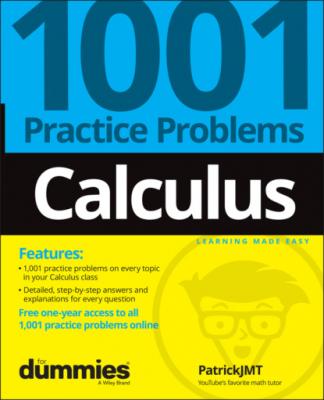Calculus: 1001 Practice Problems For Dummies (+ Free Online Practice). Patrick Jones
Чтение книги онлайн.
Читать онлайн книгу Calculus: 1001 Practice Problems For Dummies (+ Free Online Practice) - Patrick Jones страница 18
 Find the value of
Find the value of 159. Find the value of
160. Find the value of
Solving Trigonometric Equations Using Inverses
161–166 Solve the given trigonometric equation using inverses. Find all solutions in the interval
161.
162.
163.
164.
165.
166.
Chapter 3
Limits and Rates of Change
Limits are the foundation of calculus. Being able to work with limits and to understand them conceptually is crucial, because key ideas and definitions in calculus make use of limits. This chapter examines a variety of limit problems and makes the intuitive idea of continuity formal by using limits. Many later problems also involve the use of limits, so although limits may go away for a while during your calculus studies, they’ll return!
The Problems You’ll Work On
In this chapter, you encounter a variety of problems involving limits:
Using graphs to find limits
Finding left-hand and right-hand limits
Determining infinite limits and limits at infinity
Practicing many algebraic techniques to evaluate limits of the form 0/0
Determining where a function is continuous
What to Watch Out For
You can use a variety of techniques to evaluate limits, and you want to be familiar with them all! Remember the following tips:
When substituting in the limiting value, a value of zero in the denominator of a fraction doesn't automatically mean that the limit does not exist! For example, if the function has a removable discontinuity, the limit still exists!
Be careful with signs, as you may have to include a negative when evaluating limits at infinity involving radicals (especially when the variable approaches negative infinity). It’s easy to make a limit positive when it should have been negative!
Know and understand the definition of continuity, which says the following: A function f(x) is continuous at a if .
Finding Limits from Graphs
167–172 Use the graph to find the indicated limit.
167.
168.
169.
170.
171.
172.
Evaluating Limits
173–192 Evaluate the given limit.
173.
174.
175.
176.
177.
178.
179.
180.
181.